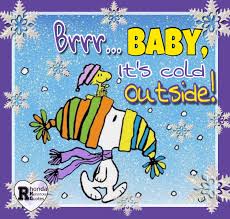|
FROM THE HUMANE SOCIETY OF ELMORE COUNTY
While we have had cold weather for a month now, THIS week is bringing dangerous low temperatures for both man and animal. Starting this Tuesday night, and for many nights in the near forecast, we will have temps well below 20 degrees. Don’t disregard these temps as unsheltered animals can die in these kinds of temperatures. This means – BRING YOUR PETS INSIDE! Animals that are outside MUST have access to shelter with thick straw/bedding so they are protected from cold, wind and rain.
Wind chill affects animals just like it does us humans. A dog/cat house (meaning solid sides, top and floor) needs to be located so the wind doesn’t blast straight into it and also sized for the pet so that they can build up body heat inside to keep warm. DRY bedding is essential. Straw (not hay) works well but no matter what kind of bedding, check it often to make sure it isn’t wet, or even missing. A wet blanket, or moldy pile of hay, or hard piece of plastic does nothing to help your pet deal with the cold so just don’t think because your dog has a plastic igloo that they can ‘handle’ this weather – if you think that, we suggest you try spending the night in that igloo yourself. These igloos have no insulation so are just basically plastic ‘boxes’ meaning cold in the winter and hot in the summer.
Please also take your pet’s age and health into account as young, healthy animals can handle inclement weather a lot better than older animals. An older horse might need to be blanketed in cold weather and an older dog with arthritis may need much thicker bedding to cushion aching joints and tired muscles. More frequent brushing to remove dead hair & dirt will also help your pet/livestock stay warm as a clean coat will provide better insulation against the weather. Yes, there are breeds more acclimated to cold weather and they might be loving this weather but far more of our southern pets are NOT used to this weather and need appropriate protection from the cold. Sadly we know of far too many Pit Bulls living lives tied to trees – these dogs have NO undercoat and are not super dogs that can withstand freezing temperatures. Like any other dog they need to be brought inside or given adequate shelter with bedding.
Keeping fresh water for pets or livestock is essential but they certainly cannot drink it if it is frozen. A log or milk jug full of water floating might atleast help the surface of the water from freezing in the short term. Best is to go to your local feed store, pet store or on-line where you can get in-tank water heaters/heated water buckets pretty inexpensively. They do need to be plugged in (can run a long outdoor extension cord if need be but make sure it is safe and cannot be chewed on or pulled out by pets/livestock) work great and are quite safe. This can save your muscles from hauling water and your pets/livestock will have clear fresh water no matter how low the temps go. Now the water ‘source’ like the standpipe/faucet can freeze and there is heat tape or even heated hoses but here in our area, generally, if your pets/livestock have a large tank of water that is kept from freezing, the daytime higher temps and sun will thaw out the hose/pipe/faucet so it can refill. This can mean checking on your water before it gets dark to refill it for the next day.
Hay for livestock is one of the best ways to help them keep up their body heat as a tummy full of digesting hay is like a furnace inside. With that hay, of course, make sure they have access to unfrozen water.
If you are worried about an animal that does not have appropriate shelter, is not being cared for, or seems to be a stray, please contact the appropriate Animal Control Officer/Law Enforcement so they can investigate.
|


